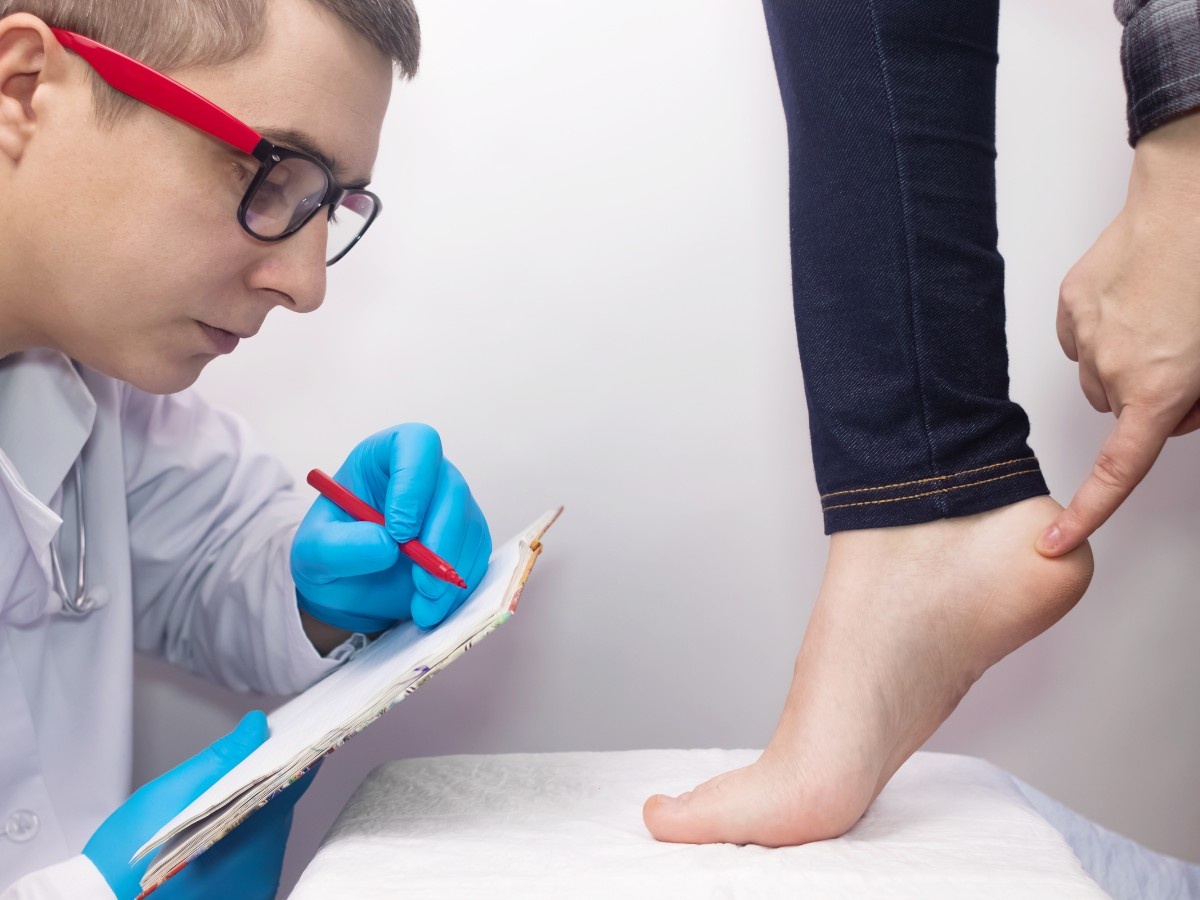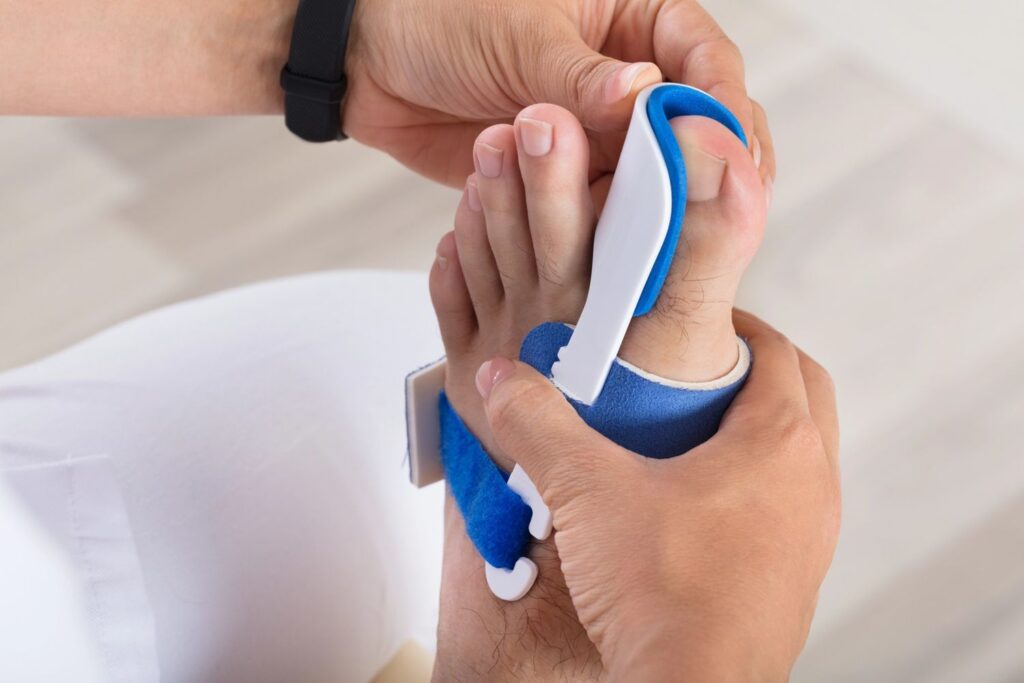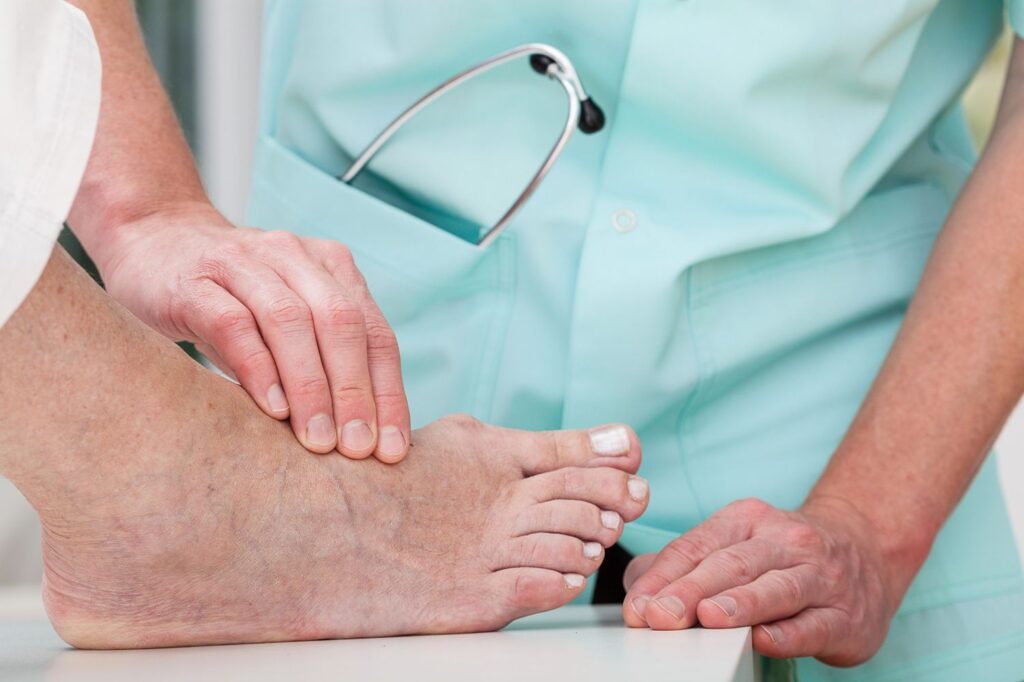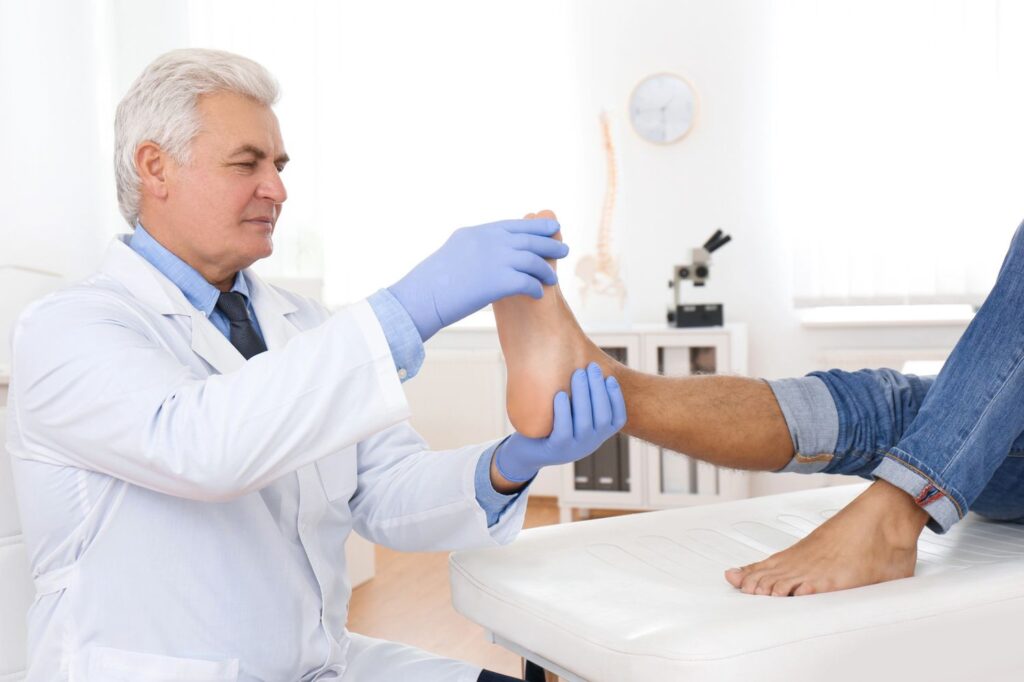Understanding Burning Heel Pain
Burning heel pain is more than just a small inconvenience—it can be a daily struggle that impacts your comfort, mobility, and quality of life. That fiery, stabbing, or tingling sensation in your heel isn’t random. It’s a clear signal from your body that something is wrong. Whether you’re walking across the room, jogging, or standing at work, the pain can make even simple tasks difficult.
At Vital Podiatry Foot and Ankle Specialist in Lincoln Green Place, we regularly see patients from all walks of life—nurses, teachers, athletes, parents, and retirees—who share the same frustrating issue: a persistent burning sensation in their heels. By identifying the root cause and treating it effectively, we help our patients get back to living without constant discomfort.

What Causes Burning Heel Pain?
Heel pain isn’t caused by just one thing. Several conditions can create a burning sensation in the heel, and each requires different treatment.
1. Plantar Fasciitis
This is one of the most common culprits. The plantar fascia, a thick ligament on the bottom of the foot, can become inflamed from overuse, poor footwear, or high-impact activities. It often causes stabbing pain in the morning and can progress into a burning sensation throughout the day.
2. Achilles Tendonitis
The Achilles tendon connects your calf muscles to your heel bone. Overuse, tight calves, or sudden increases in activity can irritate this tendon, creating burning or throbbing pain in the back of the heel, especially after exercise.
3. Peripheral Neuropathy
When nerves don’t function properly—often due to diabetes, injury, or circulatory problems—they can send false pain signals. Neuropathy often feels like burning, tingling, or numbness in the heel and foot, sometimes worse at night.
4. Nerve Entrapment
Conditions like tarsal tunnel syndrome occur when nerves in the ankle or heel become compressed, creating constant burning pain that may radiate into the arch or ankle.
5. Stress Fractures and Heel Spurs
Small cracks in the heel bone (stress fractures) or bony growths (heel spurs) can irritate surrounding tissues. While not always the main cause, they often worsen burning heel discomfort.
Symptoms to Watch For
Burning heel pain rarely occurs in isolation. You may also notice:
- Sharp pain when stepping on hard surfaces
- Tingling, numbness, or pins-and-needles in the heel
- Swelling or redness in severe cases
- Pain that worsens with activity but improves with rest
- The feeling of walking on hot coals, sandpaper, or sharp pebbles
These symptoms shouldn’t be ignored. Early intervention makes recovery easier and faster.
When to Seek Professional Help
While occasional soreness can be normal, certain symptoms mean you should see a podiatrist promptly:
- Pain lasting more than two weeks
- Severe swelling or unexplained bruising
- Difficulty standing or walking without limping
- Burning, tingling, or numbness spreading into the leg
- Pain disrupting your sleep or daily activities
Professional evaluation ensures you get the right diagnosis and a treatment plan tailored to your condition.
Risk Factors for Burning Heel Pain
Lifestyle Factors
- Standing for long hours on hard floors
- Running or exercising without stretching properly
- Wearing flat, unsupportive, or worn-out shoes
Medical Conditions
- Diabetes: Can cause neuropathy and reduced healing
- Obesity: Adds stress to the heel and arch
- Arthritis: Alters foot mechanics, increasing strain
- Poor circulation: Limits healing and increases discomfort
Age-Related Changes
As you age, your heel naturally becomes more vulnerable due to:
- Thinning of the protective fat pad under the heel
- Reduced tendon and ligament flexibility
- Increased nerve sensitivity

Diagnosing Burning Heel Pain
At Vital Podiatry Foot and Ankle Specialist, we combine patient history, physical exams, and advanced testing to pinpoint the source of your pain.
Common Diagnostic Tools
- Physical Exam: Checks tenderness, flexibility, and gait
- X-rays: Identify fractures, arthritis, or spurs
- Ultrasound or MRI: Evaluate soft tissues like fascia and tendons
- Nerve Conduction Studies: Determine if neuropathy or nerve entrapment is involved
Getting the right diagnosis is essential—treating just the symptoms won’t solve the problem.
Home Remedies for Burning Heel Pain
While professional care is often necessary, several at-home strategies can reduce discomfort:
Rest and Positioning
Avoid high-impact activities that strain your heel. Elevate your foot during rest, and use night splints to keep the fascia stretched.
Ice and Heat Therapy
- Ice: 15–20 minutes, several times daily to reduce inflammation
- Heat: Warm compresses or baths before stretching to relax muscles
- Alternating hot and cold: Offers balanced relief for stubborn cases
Stretching Exercises
Daily stretches strengthen your foot and improve flexibility:
- Calf Stretch: Lean against a wall, keeping one leg straight behind you
- Plantar Fascia Stretch: Pull your toes toward you while seated
- Toe Curls & Marble Pickups: Build small foot muscle strength
Supportive Footwear and Inserts
Choose cushioned, supportive shoes and replace worn-out pairs. Heel pads or inserts help redistribute pressure.
Extra Comfort Measures
- Roll a frozen water bottle under your foot for cooling massage
- Soak your feet in an Epsom salt bath for relaxation
- Work toward a healthy weight to relieve extra stress on your heels
Medical Treatments for Burning Heel Pain
If self-care doesn’t bring relief, medical treatments can help.
Over-the-Counter Options
NSAIDs like ibuprofen reduce pain and swelling. Numbing creams with lidocaine or cooling gels can also provide quick relief.
Prescription Medications
For persistent pain, a podiatrist may prescribe:
- Stronger anti-inflammatories
- Nerve pain medications
- Muscle relaxants for tendon tightness
Physical Therapy
Guided therapy helps restore mobility and prevent recurrence:
- Ultrasound Therapy: Reduces inflammation deep in tissues
- Massage and Myofascial Release: Improves circulation and eases tension
- Strengthening Exercises: Build foot and ankle stability
Advanced Interventions
- Corticosteroid Injections: Reduce inflammation at the source
- Shockwave Therapy: Stimulates tissue healing with sound waves
- Surgery (rare): Reserved for severe cases to release fascia, remove spurs, or decompress nerves
Preventing Burning Heel Pain
The best treatment is prevention. Protect your heels with these habits:
- Choose Supportive Shoes: Always wear cushioned, well-fitting footwear
- Warm Up Properly: Stretch before and after physical activity
- Maintain a Healthy Weight: Reduce strain on your heels
- Stretch Daily: Keep your calves, Achilles tendon, and fascia flexible
- Address Pain Early: Don’t wait until discomfort becomes chronic
Vital Podiatry Foot and Ankle Specialist Serving the Lincoln Green Place Community and Beyond in Houston
Vital Podiatry Foot and Ankle Specialist is dedicated to serving the diverse needs of the local community of [Houston], including individuals residing in neighborhoods like Lincoln Green Place. With its convenient location near landmarks such as the Little York Fire Station 82 and major intersections like North Sam Houston Pkwy and TC Jester Blvd (coordinates: 29.93757,-95.45495), we offer heel pain doctor Houston services.
Get Heel Pain Doctor Houston Services at Lincoln Green Place Now
CALL US NOW!
(281) 937-4546
Navigate From Lincoln Green Place to Vital Podiatry Foot and Ankle Specialist Now
Conclusion
Burning heel pain isn’t something to push aside—it’s your body’s way of asking for help. With the right combination of home care, professional treatment, and preventive strategies, lasting relief is possible.
At Vital Podiatry Foot and Ankle Specialist in Lincoln Green Place, we are committed to restoring your comfort, improving mobility, and helping you enjoy life without the constant distraction of heel pain. Don’t wait until the problem gets worse—take action today and give your feet the care they deserve.
FAQs
1. What is the fastest way to relieve burning heel pain?
Rest, ice therapy, and supportive footwear can help temporarily. Long-term relief requires addressing the underlying cause.
2. When should I see a podiatrist for heel pain?
If your pain lasts more than two weeks, worsens, or includes numbness or tingling, schedule an appointment.
3. Can burning heel pain be related to nerves?
Yes. Neuropathy and nerve entrapment are common causes of burning pain in the heels.
4. Do I need surgery for burning heel pain?
In most cases, no. Conservative treatments like stretching, therapy, and injections are very effective. Surgery is only recommended in severe cases.
5. How long does recovery take?
Mild cases may resolve within weeks, while chronic or complex conditions may require several months of consistent treatment.










